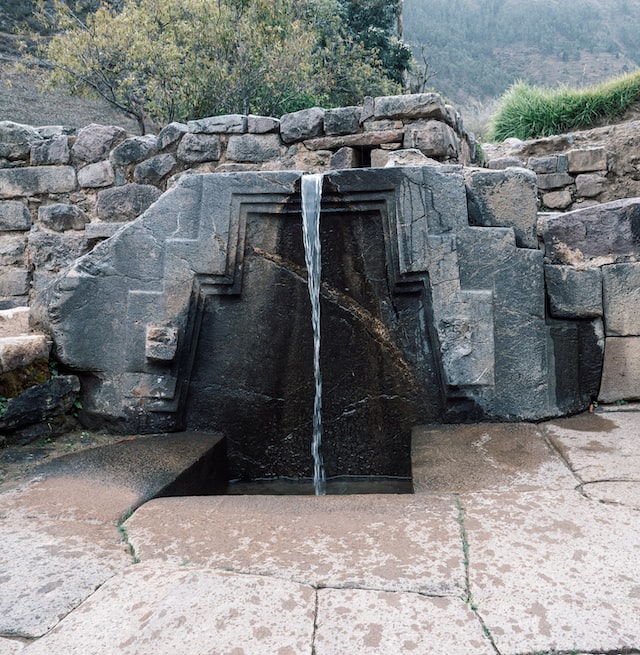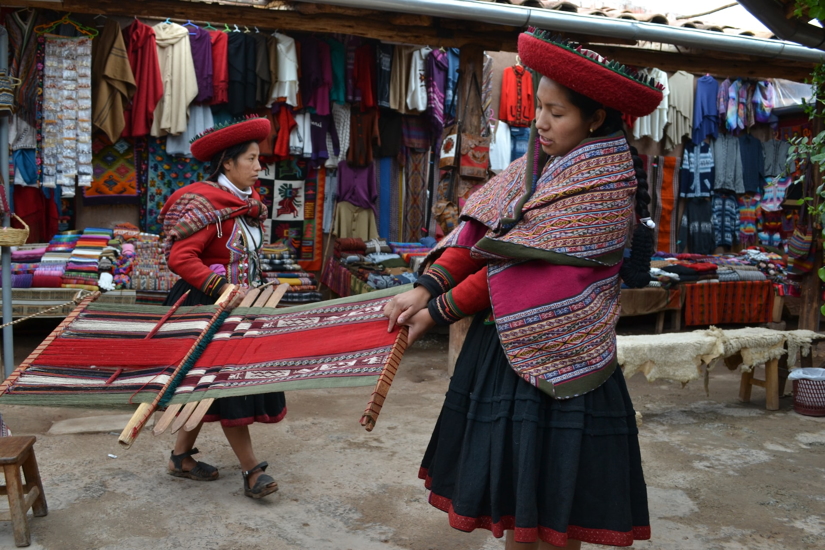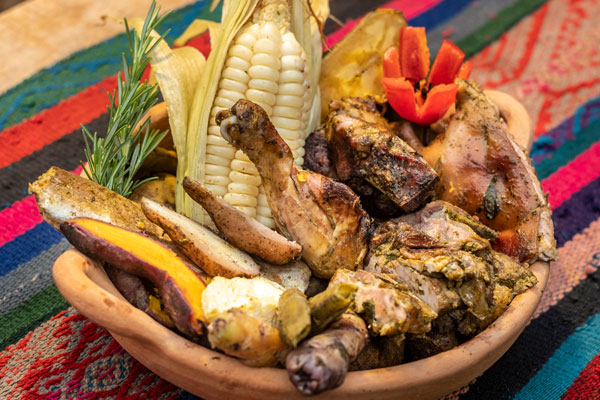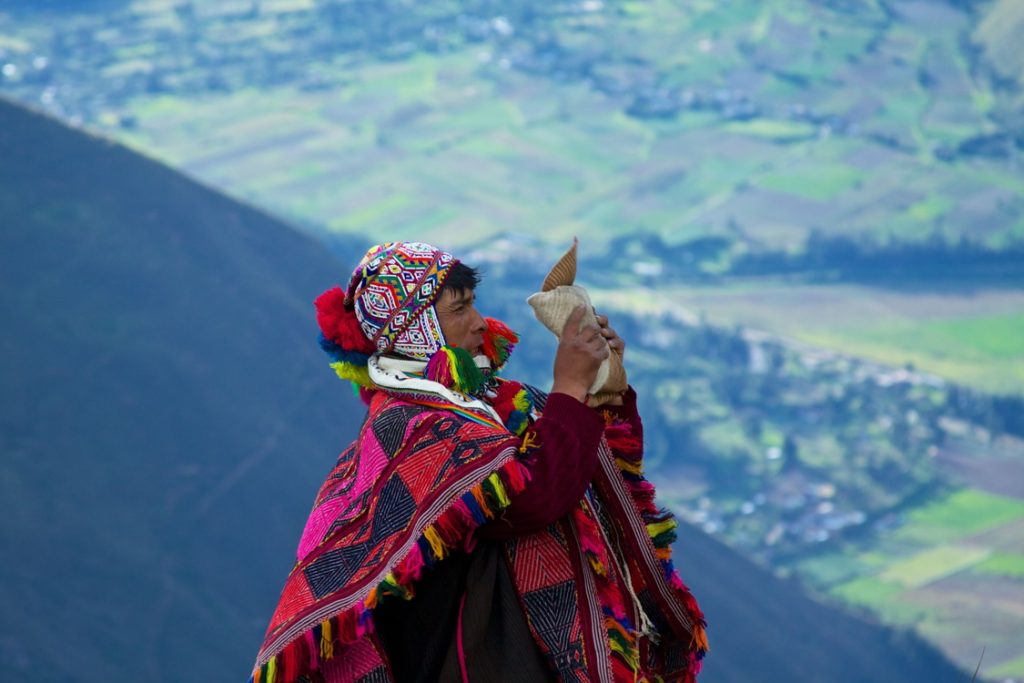
Sacred Valley
Tucked between Cusco and Machu Picchu, the Sacred Valley is a truly special place. Exploring the Inca heartland promises a delightful experience with a slightly warmer climate, stunning Andes Mountains in the backdrop, and quaint villages immersed in age-old customs. The region is dotted with remnants of ancient fortresses that stand as a testament to the Inca civilization’s architectural brilliance. As you take a tour of this area, you’ll be able to immerse yourself in the local culture and witness the traditions that have been passed down through generations. The Inca heartland is a perfect destination for those seeking a blend of history, culture, and natural beauty.
Overview
The Sacred Valley of the Incas, nestled between the popular destinations of Cusco and Machu Picchu, is a perfect place to unwind and relax for a few days. With a slightly warmer climate and the gentle presence of the Andes Mountains, you can enjoy a range of activities such as kayaking or horseback riding during the day and gazing up at the stars at night from a rustic resort.
The valley is steeped in history and culture, and there is no shortage of things to explore. You can learn about the fascinating Incan civilization and their way of life, delve into the Andean lifestyle, and discover the role textiles played in Andean culture. Additionally, you can sample traditional earth oven meals or explore the many ruins that are scattered throughout the area.
The highlight of your visit, however, will undoubtedly be interacting with the local people and their adorable llamas. The friendly locals will be more than happy to share their stories and traditions with you, providing a glimpse into their enchanting world. With so much to see and experience, the Sacred Valley of the Incas is a must-visit destination for anyone traveling to Peru.
Climate & Weather
The Sacred Valley of the Incas boasts a highland climate with consistent temperatures all year round. However, the temperatures vary depending on the altitude. For instance, the high mountain peaks like Salkantay have frigid temperatures that are low enough to sustain snow year-round. On the other hand, the valley floor has a much more temperate climate, with towns like Pisac, Urubamba, and Ollantaytambo enjoying a pleasant climate. So, whether you’re hiking up the mountains or exploring the towns in the valley, you can expect a comfortable climate.
Dry Season Vs. Rainy Season
Distinct to Peru’s Andean region, the Sacred Valley has a dry and rainy season.
The dry season is from April to October
- During these months, sunshine is regular with a minimal chance of rainfall.
- At night, temperatures drop significantly.
- Daytime Average: 68-72°F (20-22°C)
- Nighttime Average: 35-40°F (1.7-4.4°C)
The rainy season is from November to March
- Cloudy mornings with light showers are typical and afternoons and evenings can bring heavier rains.
- January and February usually receive the most rainfall.
- On average, nighttime temperatures are warmer in the rainy season and colder in the dry season.
- Daytime Average: 68-70°F (20-22°C)
- Nighttime Average: About 45°F (7.2°C)
Best Time to Visit
If you’re planning a trip to the Sacred Valley, it’s important to consider the best time to visit. Peak travel season is from June to August, which coincides with the dry season. During this time, the weather is usually sunny and perfect for outdoor activities. However, due to the high demand for services and limited availability of Machu Picchu train and entrance tickets, it’s best to plan your trip early to secure the specific dates you want.
On the other hand, the low season falls during the region’s rainy season, which runs from December to March. While the weather may be less predictable and flight delays are more common, there are still benefits to visiting during this time. Sites tend to be less crowded, and the stunning Sacred Valley mountainscapes transform into beautiful shades of green. Regardless of when you choose to visit, the Sacred Valley is a beautiful and enchanting destination that will leave you with unforgettable memories.
Geography & Map
The Sacred Valley is a picturesque area located northwest of Cusco, between the towns of Pisac and Ollantaytambo. The valley is carved out by the winding Urubamba River, providing fertile soil and an abundant water supply. Elevations in the valley vary from 9,000 feet (2,790 meters) on the valley floor to over 16,000 feet (5,000 meters) at the highest mountain peaks. This diverse landscape offers stunning views and a range of outdoor activities.
Compared to Cusco, the Sacred Valley sits at a lower altitude, which makes it an ideal place to acclimate to the altitude before visiting other nearby attractions. With its beautiful natural scenery, rich history, and abundant opportunities for adventure, the Sacred Valley is an excellent destination to add to your Peru itinerary.
ELEVATION
6,730-9,800 ft (2,050 – 3,000 m)
POPULATION:
~ 65,000 approx.
History
The Sacred Valley’s history is intertwined with the Incan capital city of Cusco. The Inca Empire was founded in the 14th century and grew to span Peru, Ecuador, Bolivia, Chile, Argentina, and Colombia. However, Cusco was the heart of the empire where the king resided. The Sacred Valley was an important source of fresh produce for the Incas, and they built religious temples and outposts throughout the valley that can still be visited today in Pisac, Ollantaytambo, and Chinchero.
From the Wari Culture to Modern-Day Preservation Efforts
Before the Inca, the Sacred Valley was home to the Wari Culture from about 500 to 1100 AD. The Inca started living in the valley around the 12th century when Manco Capac became the first Inca king. In 1531, the Spanish Conquest of the valley began when Francisco Pizarro and 168 soldiers arrived. Despite some victories, in 1572, the last Inca king, Tupac Amaru I, was captured in Vilcabamba and executed in Cusco’s main plaza.
During the 16th-18th centuries, Cusco became a hub of the southern Andes for economic growth, religious evangelization, and cultural assimilation of indigenous populations. Many churches were built in the Sacred Valley during this time. In 1911, Yale professor Hiram Bingham arrived at the ruins of Machu Picchu, and National Geographic documented his expedition, bringing attention to this remote region. Today, the Sacred Valley is a popular tourist destination, and efforts are being made to preserve ancient Quechua traditions, such as the establishment of Potato Park in 2004 to protect native potato species and agrobiodiversity.
Things to Do

Visit an Archaeological Site
The Sacred Valley is home to some incredible archaeological sites and breathtaking natural landscapes. If you’re interested in history, a tour of the Sacred Valley is a must-do activity. You can explore some of the most impressive ruins in the area, such as the Pisac Archaeological Park and the Ollantaytambo Fortress. The Pisac ruins are a real wonder, featuring ceremonial baths, living quarters, and the largest Inca cemetery. What makes them even more impressive is that they sit atop a mountain overlooking the village, with sweeping terraces where the Inca once grew their crops. Another amazing site is the Ollantaytambo Fortress. It’s a stunning example of Inca architecture and town planning and was the site of the Inca’s biggest defeat against the Spanish.
Maras & Moray Tour
If you’re looking for some hidden gems to explore in the Sacred Valley, be sure to visit the Maras Salt Pans and Moray’s concentric terraces. These sites, located in a remote region that’s not easily accessible by public transportation, offer a glimpse into Incan ingenuity. Even though they served different purposes, these ruins are often included in Sacred Valley tours. Scholars believe that the Moray terraces were once used as an elaborate agricultural laboratory where each terrace had a unique microclimate. Today, the mountainside salt pans at Maras are owned and operated by local residents. You can reach this site by car, foot, bike, or even horseback. Make sure to check with your travel advisor for the best options for you.


Water Rafting Tours
If you’re looking for an exciting adventure in the Sacred Valley, white water rafting might just be for you! The experience begins with a pick-up at your hotel and a drive to the starting point along the river. As you make your way down the river, you’ll encounter gentle stretches that build up to more thrilling rapids. The whole trip lasts about two hours and ends with a delicious lunch before heading back to your hotel. There are different sections of the Urubamba River where rafting trips take place, each with varying levels of difficulty ranging from introductory to class II and III plus. So whether you’re a beginner or an experienced rafter, there’s something for everyone.
Stand Up Paddle Boarding
Looking for a fun way to get some exercise and enjoy the water? Why not try stand-up paddle boarding? You can enjoy a half-day tour of the beautiful Sacred Valley at Lake Piuray, near the town of Chinchero, which is only about an hour’s drive from Cusco. Don’t worry if you’re new to the sport, as it’s suitable for all ages and skill levels. Your guide will give you a quick lesson on basic paddling techniques and make sure you have the right equipment before you set off. Take in the breathtaking natural scenery while paddling along the tranquil lake shores. And the best part? The tour includes photos and videos of your adventure, so you can share your experience with friends and family back home!


Zip Lining and Mountain Climbing
If you’re looking for an adrenaline rush and stunning views of the Sacred Valley, check out the zip lines located halfway between Urubamba and Ollantaytambo. This full-day tour includes a Via Ferrata climb up a steep rock face, followed by ziplining down cables ranging from 300 to 1500 ft (100 to 500 m) in length. The Via Ferrata climb can be quite challenging, so it’s important to be in the good physical condition and have time to adjust to the altitude. But for those who are up for the challenge, the breathtaking views and exhilarating experience are well worth it!
ATV Tours
Are you an adventure seeker? Get ready to feel the rush of adrenaline on a full-day ATV/Quad or motorcycle tour. In the picturesque Sacred Valley, you and your guide will ride off-road to explore the stunning scenery and visit key landmarks. Make sure to pack your sunglasses, sunblock, and a jacket for the ride. Our travel experts are available to help you choose the best motor tour for you and your travel companions. Get ready for an unforgettable day of exploration and excitement!


Independent and Guided Hiking
The Sacred Valley is a paradise for those who love to explore the great outdoors. It’s home to some of the most breathtaking hiking trails in the world. While the 4-day Inca Trail to Machu Picchu is an incredible experience, there are also day hikes that offer unforgettable adventures for travelers with limited time. You can choose from a range of options such as hikes to Pisac ruins, Ollantaytambo ruins, or Huchuy Qosqo ruins. Or, for nature lovers, there are hikes to stunning natural wonders like Lake Humantay and Rainbow Mountain. Whatever your preference, our travel experts can help you choose the perfect hike to create memories that will last a lifetime.
Visiting Andean Artisans
Immerse yourself in the vibrant culture of the Sacred Valley with a hands-on cultural workshop led by local artisans. Discover the traditional crafts of wood carving, basket weaving, or pottery and learn from the skilled craftsmen who call this region their home. It’s a fantastic opportunity to delve deeper into the local community and gain insight into the rich cultural heritage of the area.
For a truly authentic experience, consider signing up for a workshop with Awamaki, a nonprofit social enterprise dedicated to making a positive impact in the Sacred Valley. They offer a range of workshops that connect travelers with local communities, supporting efforts to empower and financially uplift the people who call this region home.


Llama Trek
Take a hike in the stunning Sacred Valley and get ready to add a dose of cuteness to your adventure! The Llama Pack Project offers a unique 3-4 hour hike that not only showcases the natural beauty of the region but also highlights the important role that llamas play in daily life in the Andes. The hike starts just 15 minutes away from the charming town of Urubamba and takes you uphill to a perfect grazing spot for llamas. You can enjoy a lovely picnic with a breathtaking mountain view before heading back down. This walking tour is suitable for families and covers just one mile. Don’t miss out on this unforgettable experience and a chance to support the local community!
Pachamanca Experience
Pachamanca is the term used in Quechua to describe “earth cooking pot,” which represents traditional cooking in the Andes. This culinary tour offers a firsthand experience of how the dish is prepared, which involves a selection of vegetables, meat, and potatoes wrapped in banana leaves. The ingredients are then cooked to perfection by being buried underground and cooked over hot stones. Afterward, indulge in your Pachamanca feast. This is an authentic and unforgettable culinary experience that you shouldn’t miss during your time in the Andes.


Pachamama Ceremony
Participate in a Pachamama Ceremony, or an “Offering to Mother Earth” Among the Andean public, the Pachamama, or Mother Earth, is quite possibly the most loved and honored deity. During this service, a shaman from a neighborhood town readies a “despacho” fabric with different things to offer the earth goddess – chief among them the sacred coca leaves. Members sit in a semi-circle around the “altar” to make contributions too and express gratefulness for the year’s overflow. This function is an illustration of the traditional Andean thought of “ayni” or correspondence with mother earth to reestablish harmony.
Sacred Valley Villages
Pisac
Pisac is known for its ruins and market. The road from Cusco to Pisac leads through a mountain pass and drops down into the Sacred Valley. Popular market days in Pisac make the town an obligatory stop. Every Sunday and Thursday, residents from the highland communities sell Andean crafts and freshly grown fruits and vegetables in the main plaza. Keep an eye out for handmade textiles made with natural dyes and one-of-a-kind artisanal pieces. Local tourist-oriented vendors display colorful sweaters and hats made of alpaca wool; silver and stone-embellished jewelry; and ceramic goods.
Even if you’re not in town on market day, the artisanal shops in and around the plaza, bordered by San Pedro Church, are open daily. Souvenir prices in Pisac tend to be slightly more expensive than in shops in Cusco. Bargaining with merchants to lower the asking price of a few Soles is common practice.
The ancient Inca archaeological site at Pisac perched high above the town is well worth the visit. To get there, you’ll have to make the steep walk (about 90 minutes) up through lush Inca terracing, or a short taxi ride, above Pisac. The site is divided into various agricultural, military, religious, and urban areas built along a thin mountain ridge connected by stone steps and narrow dirt trails. Inca-constructed watch towers and water fountains complement the site’s fine masonry. The hand-carved structure in the middle of the Temple of the Sun, or Intihuatana, is believed to be an important religious or astronomical tool used by the Inca; its angles define the changing seasons.
Ollantaytambo
Ollantaytambo is a small town with very big attractions. Shortly after noon, the town turns into a lively hub as the first travelers arrive. After visiting the Inca Fortress, browse the souvenir shops or relax at a local cafe and admire the Andean scenery surrounding you. There are some very unique and memorable things to do in Ollantaytambo.
The well-preserved archaeological site at Ollantaytambo is built along the slopes of a narrow mountainside. Stone steps up a terraced-laced hillside lead to the impressive main complex. The panoramic views at the top are a photographer’s dream!
The train station in Ollantaytambo is an important transit point for travelers taking the train to Machu Picchu. Since there’s not a direct road that goes all the way to the famous citadel, Ollantaytambo is quite literally the end of the road in the Sacred Valley.
Urubamba
Urubamba may not have ancient hillside ruins to boast, but the boutique and luxurious resort hotels located just outside of town entice many travelers. Staying overnight in the Urubamba valley is the perfect way to appreciate the beauty of the Sacred Valley at a slower pace. Enjoy top-notch services, spa amenities, and endless Andean vistas from your hotel room.
For a taste of the budding culinary scene in Urubamba, dine at top-rated restaurants Q’anela or Paca Paca. The onsite restaurant at Hotel Casa Andina Private Collection in the Sacred Valley, Alma, is highly recommended.
Many travelers pass through Urubamba because it resides along the only road connecting key transport routes through the Sacred Valley. In fact, many Sacred Valley tours stop in town for lunch. If you have extra time, walk to the town plaza and then visit the indoor Urubamba Market just two blocks away.
Chinchero
Life in Chinchero generally moves at a slow pace. But on Sunday the town hums with activity during its popular local market. Vendors sell locally grown produce, artisan goods, and most notably, handwoven blankets, ponchos, belts, and rugs. Andean weaving has been practiced in the Sacred Valley for generations, but no town celebrates this centuries-old tradition more so than Chinchero.
Entrance to the main plaza and the Inca ruins at Chinchero requires an admission ticket. To one side of the plaza, Inca stone structures and agricultural terraces sweep down the hillside. On a clear day, you can see Apu Salkantay, a famed Inca peak, off in the distance. A white 16th-century church built on the stone foundation of a once-Incan structure boasts tall ceilings and beautifully painted walls.
Chinchero is far less touristy than Pisac and Ollantaytambo. But it looks like this may soon change. To meet the growing demand of people visiting Machu Picchu, the construction of a new airport in the Sacred Valley near Chinchero is underway.
